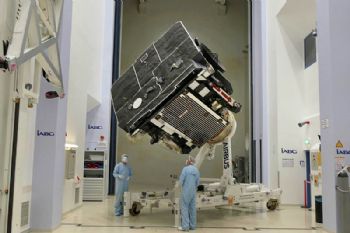
Solar Orbiter, the European Space Agency’s (ESA) flagship mission to study the Sun (
www.esa.int), has completed all tests (at the IABG test centre near Munich) and is set to be flown to Cape Canaveral, ready for its launch in February 2020 to embark on a mission lasting almost eight years.
Originally built by Airbus in Stevenage (
www.airbus.com), Solar Orbiter will study the Sun in detail — and its effects on the solar system.
The spacecraft carries a suite of instruments that will measure the particles, fields and waves of the plasma through which it travels, and at the same time make observations of the Sun’s surface and outer atmosphere, the photosphere and corona.
Eckard Settelmeyer, Airbus’s head of Earth observation, said: “Solar Orbiter has been one of the most challenging and exciting missions we have ever designed and built here in Stevenage.
"Sending it so close to the Sun means that some parts of the spacecraft have to withstand temperatures above 500°C, with others in permanent shadow down to a nippy -180°C.
"To ensure that the very sensitive instruments can measure the Sun’s fields and particles, the spacecraft itself must be totally invisible to its sensors, which has pushed us to the absolute limits of what is technically achievable.”
At its closest point, Solar Orbiter will be closer to the Sun than the planet Mercury (at a distance of 42 million km), in an orbit that takes it out of the ecliptic plane (Earth’s orbit around the sun).
From here, it can perform long-duration observations of the same region of the Sun’s surface, and also see its polar regions.
In order to achieve the required orbit around the Sun, Solar Orbiter will first make a complex series of gravitational-assist fly-bys of both Earth and Venus.